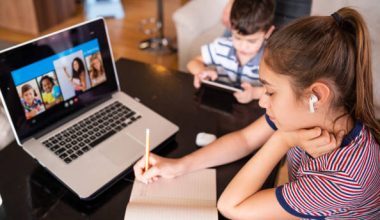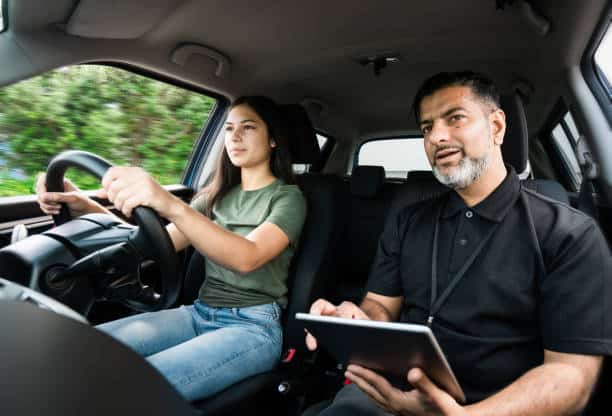The future students will demand the learning support appropriate for their situation or context, nothing more, nothing less. Some persons may argue that this entails remote learning.
Remote learning occurs when the learner and instructor, or source of information, are separated by distance and cannot meet in a traditional classroom setting.
Information is typically transmitted via technology (email, discussion boards, video conference, audio bridge), so no physical presence in the classroom is required. This is simply what flipgrid is all about.
A lot of students today use Flipgrid for one purpose or another. Are you a student and wondering how to use Flipgrid easily for students?
This article has highlighted that, and in addition, including the importance of flipgrid and how you can use flipgrid easily as a student.
Table of contents
What is Flipgrid?
Flipgrid provides students’ needs by making available a video discussion tool designed with the might of Microsoft to work specifically for teachers and students in a digital classroom.
It came to them that students might need something more, and flipgrid was created as an educational tool that uses video to create an open platform of discussion and learning. Flipgrid does not require a physical classroom to get everyone involved.
Its ability not to require physical presence makes it an ideal remote learning tool and a powerful homework-based application for students to use with each other.
Flipgrid was designed to ensure that students can comfortably speak to a group of other students without the same fear that might constrict responses in a real-world situation. In using flipgrid, students can do as much as re-record responses, removing the pressure of answering in class on the spot. Flipgrid is a great learning tool for students to learn remotely.
Why do students need Flipgrid?
Flipgrid, being a platform for students to learn remotely comfortably, has a lot of advantages. It is rated high amongst students. Some of its benefits are:
• Flipgrid can interact using video. This means that while using flipgrid, you can have a face-to-face conversation as you normally would in the real world, without the pressure of a live classroom.
• Flipgrid gives the students the space and time to respond when ready. It has a way of ensuring that every student is actively participating, ensuring that educational engagement is made possible for even more anxious students who might ordinarily feel left out in class.
• Flipgrid allows students to add rich media. The option for adding media has a way of encouraging students to be creative and, potentially more importantly, expressive. By adding emoji, text, and stickers, students can engage with class content as they might interact with friends using social media platforms.
• With flipgrid, you can select videos to hide or delete later.
• With flipgrid, you can also tell your story by creating, trimming, and rearranging unlimited video Clips. You can also upload videos from your device and record an introductory video or summary to add more context.
• Flipgrid lets you show your work by flipping on the new whiteboard mode with live inking. You can add context by overlaying photos from your camera roll, emoji, and text as stickers on your video.
• Besides learning, with flipgrid, you can also apply unique video filters to set the tone: warm, cool, super warm, super cool, pixel, b+w, and old town
• With Flipgrid, students feel less apprehensive and more empowered to express themselves openly, engaging more deeply with the task. Ultimately, that should result in deeper learning and better content recall.
• Flipgrid is great for integration. Since it works with Google Classroom, Microsoft Teams, and Remind, it’s easy for a teacher to integrate into the current virtual classroom setup.
• Flipgrid is a fun way of learning. It has been found that students who use flipgrid to learn to enjoy the topics and have a better understanding of them than students who do not.
What are the Ways Flipgrid Can Be Used?
Even though the major point of using flipgrid is for collaboration, there are other ways flipgrid can be used, especially for students. Some of them are:
With Flipgrid’s new augmented reality (AR) feature, classrooms and classroom libraries can use the video QR code to create an engaging way for students to share book reviews.
After a student records their review, the teacher can print the QR code and tape it on the book, and the student’s classmates can use their devices to scan the code and watch the review to help them decide if they’d like to read the book.
Practicing world language skills:
Flipgrid makes it possible for teachers in different districts and different countries to collaborate. For world language teachers, this creates opportunities for students to practice their speaking skills with a larger group than just their class.
Students can post videos to get practice with the vocabulary they’re learning. Instead of being limited to practicing with the people in their physical classroom, they can engage and build their skills with other students studying the same language or have conversations with native speakers.
Increasing accessibility for all students:
Flipgrid has expanded many accessibility features to ensure that all students can participate.
Students can use closed captioning when viewing videos, generating a full transcript for each video.
Microsoft’s Immersive Reader can be used in closed captioning and any text within a topic to read the texts aloud and break up words into syllables for easier decoding.
Inviting outside speakers:
Teachers can invite guest speakers to participate in classroom discussions using Guest Mode. Guests can watch student videos and post their videos.
This option allows experts in a field to share their knowledge asynchronously, with students posting videos of their questions for the expert to answer at a convenient time in a video response.
STEM teachers, for example, could invite engineers or scientists to discuss their careers and research and to answer student questions.
Building student portfolios:
A teacher can create a grid for student portfolios. Within this grid, the teacher makes a topic for each student, and students post videos explaining their work, demonstrating a recently learned skill, or reflecting on an in-class experience.
The teacher can share the link to a student’s topic with their parents or guardians so they can view their child’s work throughout the year. Since the topics can also be available to every student, students can observe their classmates’ work.
Adding annotations:
When students record a video, they have the option to address it on the video, and they can add sticky notes with additional text. For students in math practicing solving problems or students in chemistry learning to balance chemical equations, this feature is a great way to show their thinking.
Building a mixtape:
The mixtape is a way to curate videos from any topic or grid in a single location.
A teacher can select any student video and add it to the mixtape, which can be shared with the class.
Collecting memories from throughout the year is a great way to take advantage of the feature:
As the year progresses, the teacher can save interesting videos or important moments from different topics.
Watching the mixtape as a class at the end of the year will help students recall what they’ve learned.
Celebrating completed projects or assignments is often forgotten in the classroom due to time constraints, but Flipgrid makes it relatively easy and quick.
Using the student-to-student replies option, everyone in the class can view and respond to each other’s videos.
For example, students in a history class could share a long-term project they have completed, walking through what they learned and what they created.
Peers in the class compose video responses, providing positive feedback on the work completed.
When I do this with my ELA students, I require everyone to comment on two or three classmates’ projects from any of my sections.
Is using flipgrid worth it?
With all the reasons students use flipgrid as listed above, flipgrid is worth it. With Flipgrid, students can remotely transform family nights, homework, school events, book reviews, Science Fairs, student art galleries, language classrooms, the outside of your classroom door, and the entire school. Using flipgrid for students could barely go wrong because it’s an easier and more fun way of learning.
How to use Flipgrid for Students Easily
Have you been wondering how to use flipgrid for students easily? It’s easy. Flipgrid is a video tool that allows teachers to post “Topics, ” essential videos with some accompanying text.
This is then shared with students, who can be prompted to respond.
The response can be made using the software’s camera to create videos posted to the original Topic.
These videos can be recorded as many times as needed before uploading and can have the addition of emojis, text, stickers, drawings, or custom stickers.
The service works online, so it can be accessed via web browser from nearly any device or through the app, making it suitable for laptops, tablets, smartphones, Chromebooks, and desktop computers.
The only requirement on any of those devices is a camera and enough processing power to back that up.
The steps you should take in setting up and start using Flipgrid for students easily are-
Step 1
Download Flipgrid. Navigate to https://info.flipgrid.com/ on any web browser.
Step 2
Get signed up by using a Microsoft or Google account.
Step 3
After your teacher has created a topic, get a link. You can log in and use the myjoincode to get into the Topic directly to watch the video and post your response.
Step 4
The video response appears on the page below the original Topic Prompt. Other students can comment on these using text, but the teacher can set and control permissions as they see fit.
Step 5
Record a response. Go to the topic your educator assigned. Watch the topic media and explore links. When ready, click the “Add Response” button to open the Flipgrid camera.
Step 6
Submit your video. After recording, take a selfie or choose a frame from your video and submit it. Now watch the comments and your classmates’ videos come in.
Flipgrid features you should know about
Flipgrid is easy to use. It is also user-friendly. However, there are some features on flipgrid you should know about to ensure that you get the most out of using flipgrid.
Flipgrid grids
A “Grid” is the term the Flipgrid community uses to describe a group of learners. With a teacher, a Grid could be the class or a small group.
Flipgrid topic guests
This feature is mainly used when a teacher wants to integrate more topics. They use topic guests to allow others to input. It is a powerful option if your teacher wants to include guardians since this is online, and that becomes a real possibility.
Flipgrid shorts
This video tool allows teachers and students to create videos for a custom finish rather than simply uploading a YouTube clip. It will enable them to upload and edit videos, add more clips, cut, and segment and enhance with emoji, stickers, and text.
Add arrows to a graph image as you talk over that section of the video, for example, as a great way to get in-depth information across.
Shorts is a simple-to-use video editing tool that can produce a powerful result, depending on how creative you want to be.
Flipgrid video moderation
This flipgrid feature is used by the teacher. It is one way to stay in control of the content students submit.
It sets the video moderation mode to when you post a new topic. In doing so, any video uploaded will not be posted until you have checked and approved it.
How to Download a Video Using Flipgrid
When using flipgrid, you note that you can only download your videos. There are different ways through which you can download your videos using flipgrid. They are-
• Download while recording- This download form can be done during review. While recording, you will see a cloud icon during the option to download in the top right. You can then turn it on to begin the download process.
• Download during the submission step. You can download the video and selfie during the last step of the recording process. Note that whilst doing this, leads can turn off the download option.
• If you are on Chrome and you record multiple clips or trim the video, there is no option to download during video creation – this only works on the new Microsoft Edge!
How do you see videos on flipgrid?
To see videos, all you need to do is to visit my.flipgrid.com. However, if you are using an email, you can go to my.flipgrid.com to easily access any Group or Topic they have joined in the past by logging in with their email. You can also-
• View videos that are moderated and hidden from the Discussion
• View private comments from their Group lead – this includes text comments, scores, and video feedback
• Download their video and selfie
• Hide or delete their video
Conclusion
The video-sharing tool Flipgrid, as we all know, is popular in schools—so popular, in so many countries, that its rapid rise has been attributed to “Flipgrid Fever.”
The tool has been free for educators to use for over a year now after being gained by Microsoft. If you have been having difficulties, I hope this content on how to use flipgrid for students easily has helped.
Frequently Asked Questions
Flipgrid gives students both the opportunity to develop voice and to learn how to present themselves online. Repeated experience using Flipgrid increases their feelings of social connectedness and improves academic performance.
Flipgrid allows students to speak to the group without the same fear that might constrict responses in a real-world situation. Students can re-record responses, removing the pressure of answering in class, on the spot. Of course, it’s also a great tool for learning remotely.
Flipgrid is a free, accessible, and simple video discussion experience. Educators create and share discussion Topics with their learning community and learners record and share their short videos. The Flipgrid Teams app makes it easy to participate in a discussion right from Microsoft Teams.
At its most basic, Flipgrid is a video tool that allows teachers to post “Topics, ” essentially videos with some accompanying text. This is then shared with students, who can be prompted to respond. The response can be made using the software’s camera to create videos that are posted to the original topic.
Flipgrid is a tool that allows students and teachers to create videos to discuss and self-assess. It allows teachers to create up to a three-minute video asking questions or directing students on how they would like them to respond.
References
- techlearning.com/how-to/what-is-flipgrid-and-how-does-it-work-for-teachers-and-students/
- blog.etechcampus.com/change-the-way-you-assess-with-flipgrid/
- education.microsoft.com/en-us/course/
- info.flipgrid.com/




